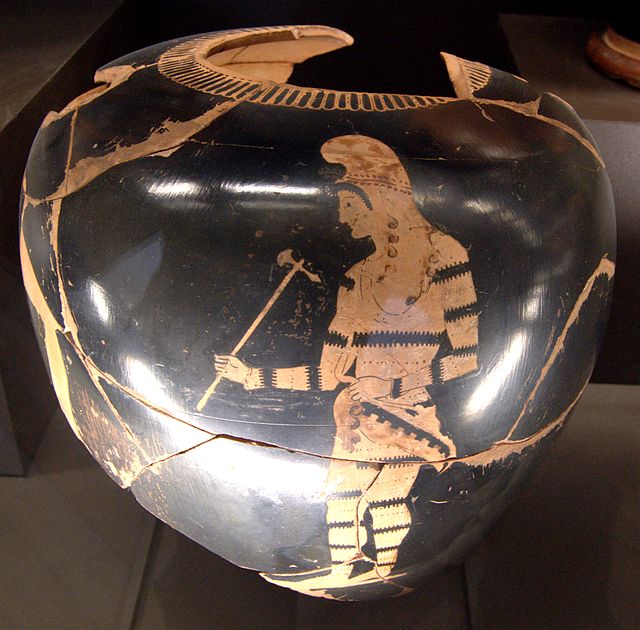Euphronios was an ancient Greek vase painter and potter, active in Athens in the late 6th and early 5th centuries BC. As part of the so-called "Pioneer Group,", Euphronios was one of the most important artists of the red-figure technique. His works place him at the transition from Late Archaic to Early Classical art, and he is one of the first known artists in history to have signed his work.
Paris, Louvre G 106: Neck amphora depicting a Scythian archer, c. 510–500.
Paris, Louvre G 34: Bowl: A satyr pursues a maenad.
Paris, Louvre G 33: Chalice krater produced in cooperation by Euphronios and Euxitheos
Louvre G 103: Heracles and Antaios on a chalice krater.
Black-figure pottery painting, also known as the black-figure style or black-figure ceramic, is one of the styles of painting on antique Greek vases. It was especially common between the 7th and 5th centuries BCE, although there are specimens dating in the 2nd century BCE. Stylistically it can be distinguished from the preceding orientalizing period and the subsequent red-figure pottery style.
Heracles and Geryon on an Attic black-figured amphora with a thick layer of transparent gloss, c. 540 BCE, now in the Munich State Collection of Antiquities.
Athena wearing the aegis, Attic black-figured hydria by the potter Pamphaios (signed) and the Euphiletos Painter, c. 540 BCE. Found in Tuscania, now in the Cabinet des Médailles, BNF, Paris
Scene from a black-figure amphora from Athens, 6th century BCE, now in the Louvre, Paris
Hercules drives Cerberus ahead of him. The beast turns one of its heads back in a threatening manner and raises its snake tail. Faultily fired Attic neck amphora by the Bucci Painter, c. 540 BC, found in Vulci, now in the Munich State Collection of Antiquities








